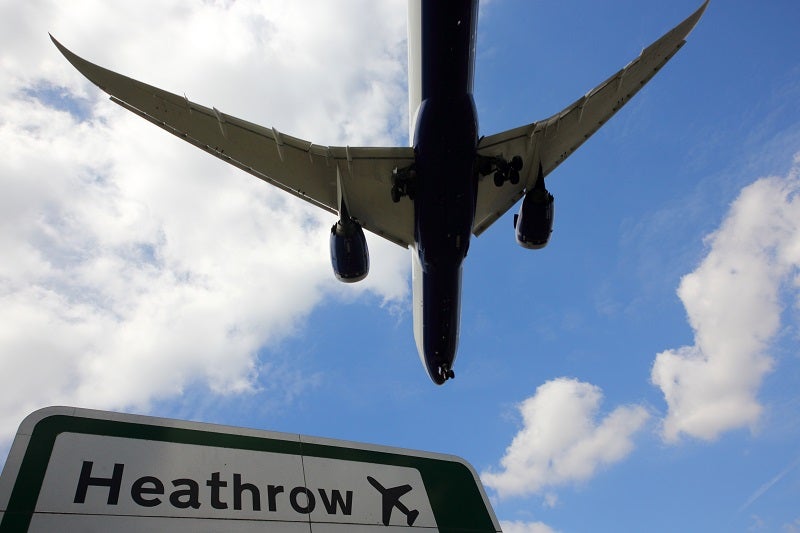
As the busiest airport in Europe by passenger traffic – and seventh busiest globally – the runways at Heathrow must be run with absolute efficiency to support the millions of passengers that pass through the airport every year. In 2019, Heathrow handled a record-breaking 80.8 million passengers.
However, the occurrence of strong headwinds would regularly affect runway efficiency by disrupting aircraft groundspeed during approach and decreasing landing rates. For an airport as busy as Heathrow, these headwinds would lead to delays and cancellations, incurring costs for Heathrow’s passengers as well as the airlines.
To combat these disruptions, time-based separation was deployed at Heathrow in 2015, followed by enhanced time-based separation in 2018. The introduction of the system, part of the NATS/Leidos Intelligent Approach toolset, remains a world-first, delivering immediate and major benefits to passengers and airlines.
So how does it work? Developed in collaboration between technology firm Leidos and air navigation service provider NATS, it uses time-based separation (TBS) to minimise the impact of strong headwinds on landing rates by dynamically calculating separation minima using time instead of distance-over-ground.
Enhanced time-based separation (eTBS) builds on this capability using the European Wake Vortex Re-categorisation programme (RECAT EU) – Eurocontrol’s categorisation of wake turbulence and optimised separation minima – and adds Optimised Runway Delivery (separation to threshold) and Runway Occupancy indicators for air traffic controllers. eTBS increases the available landing rate which, at Heathrow, is used to add resilience to the operation, further reducing airborne holding and delays.
Enhancing resilience and runway efficiency at Heathrow with time-based separation
Heathrow operates at 98% capacity, with an aircraft taking off or landing every 45 seconds. However, high winds create a knock-on impact on the time between landing aircraft.
Both TBS and eTBS have helped to improve Heathrow’s resilience by reducing the resulting delays and minimising the time lost due to headwinds. On average, the system recovers roughly two landings per hour in all wind conditions and up to four landings in strong headwinds.
“We deployed TBS and enhanced TBS to support resilience,” explains Heathrow’s ATM Strategy Lead, Jennifer Sykes. “This has helped to boost Heathrow’s punctuality during challenging weather conditions.”
Together, these deployments are estimated to have reduced delays in strong headwind conditions by around 60%, contributing to enhanced arrivals resilience and saving approximately 15,000t of fuel – equating to around 47,000t of CO2 each year. This achievement supports Heathrow’s aims of reducing emissions, improving passenger experience and decreasing the number of late flights over the airport’s local communities.
According to Sykes: “In our view, the current capability and the planned enhancements will be essential for all capacity-constrained airports to be able to optimise throughput and resilience to disruption in the future, if not today.”
The Intelligent Approach: Ready for the future
The existing Intelligent Approach toolset is being continuously improved and will soon support new functions such as pairwise wake separations, a process which involves identifying safe separation distances based on the type of aircraft. Using extensive data analysis, compression between each aircraft pair is anticipated so that controllers are able to pair aircraft for the safest and most efficient landing schedules.
These types of enhancements will be simple to implement because TBS and associated procedures are already well established.
“We believe that this new landing procedure gives us the resilience needed to adapt and introduce new changes,” adds Sykes.
But beyond Heathrow, the Intelligent Approach has the potential to help airports all over the world. With air traffic increasing and further enhancements planned, it will soon be essential for all capacity-constrained airports to optimise throughput and increase resilience to disruption. This need will only become more pressing in coming years as airspace is modernised and solutions are needed to minimise the environmental impact of air travel.
What’s more, the Intelligence Approach solution is an enabler for creating an optimised, reliable plan for arrivals that can be integrated with wider airport planning such as departure sequences.
Maintaining stable and reliable predictions of the landing rate at capacity-constrained airports enables the whole network to plan more efficiently. It cuts delays and optimises the use of the most constrained areas of the network with a reliable plan that provides the best outcome for the travelling public, local communities and the environment.
For information about the Intelligence Approach suite of controller tools, visit www.intelligentapproach.aero



